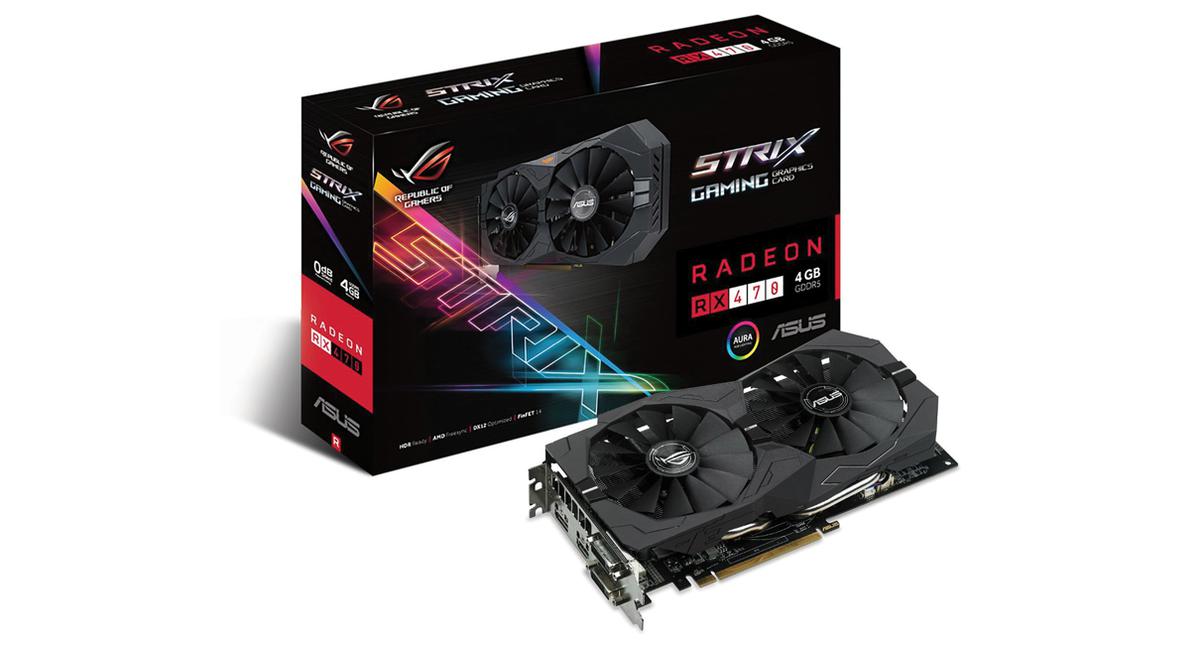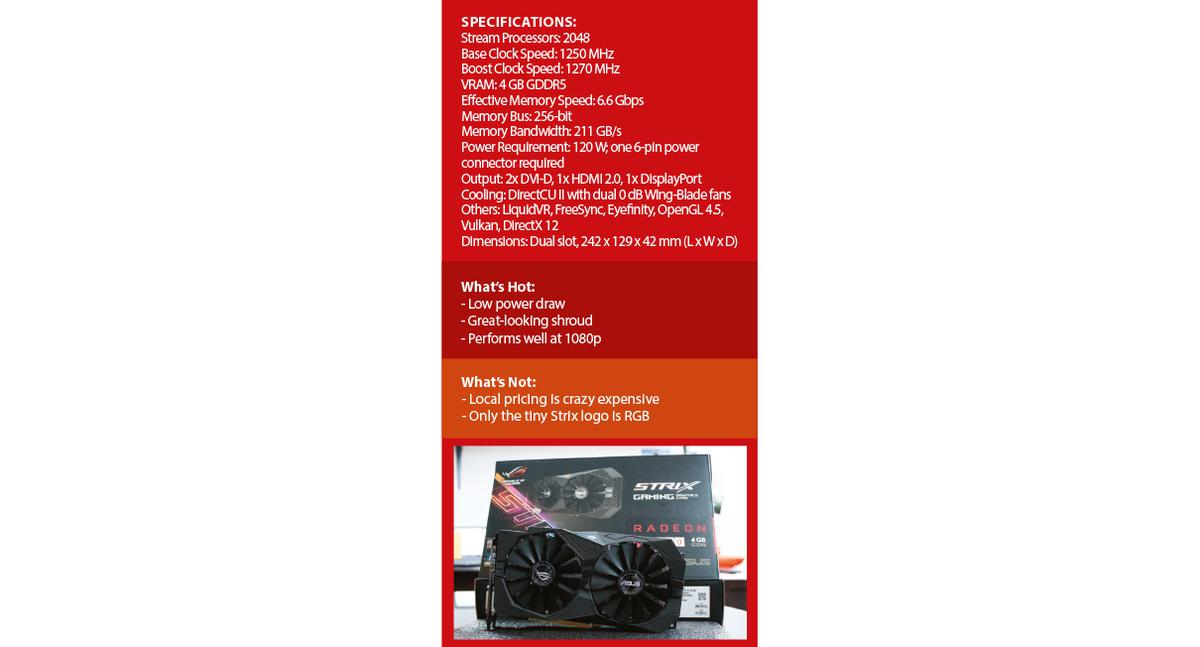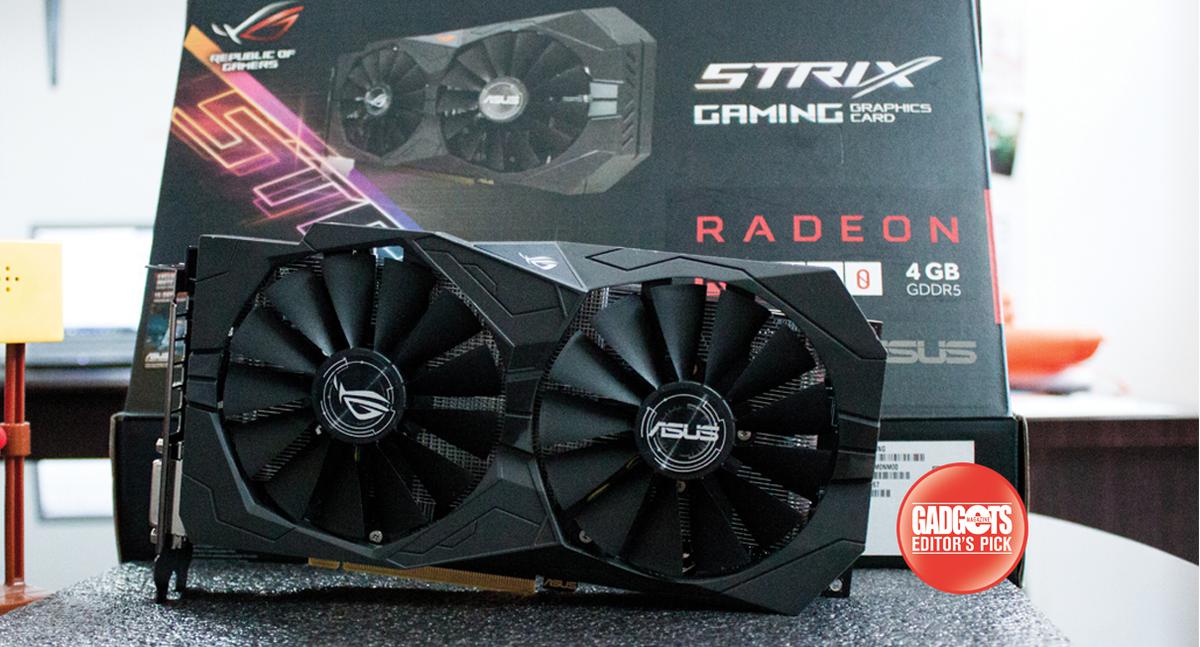While we PC gamers all want the best hardware for our precious rigs, the truth is a good portion of us would starve trying to create the most powerful (and most beautiful) piece of envy-inducing gaming hardware. Enter AMD’s RX 470—a card that serves to fill the void between the mainstream RX 480 and budget-oriented RX 460. But while it promises solid 1080p performance at a reasonable ticket price, does it deliver in the real world? Asus lent us an ROG Strix RX 470 variant to find out.

Design: 4/5
Being an ROG Strix graphics card, this flavor of the RX 470 comes with all the gamer-esque design cues expected from the brand. The jagged, owl-shaped shroud features aggressive lines, though it’s open at the top, bottom, and side for greater heat dissipation. You can actually see the DirectCU II cooling system’s two nickel-plated, direct contact 8 mm heat pipes and aluminum fins because of the card’s open design. For additional cooling, this RX 470 has a four-pin fan header along the right edge so you can connect a dedicated system fan.
The top edge of the card also houses an upward-facing 6-pin power connector, while the left edge contains the two DVI-D, single HDMI 2.0, and single DisplayPort outputs.
Though the card doesn’t have a backplate to give it added rigidity and brownie points, it does have an RGB Strix logo, though it’s fairly tiny IMO. Its color can be customized with the Asus Aura software to color-match and effect-coordinate with other Aura-enabled components.
Hardware: 4/5
Like its brothers, the RX 470 struts a Polaris GPU, though unlike the RX 460’s smaller Polaris 11 chip, this one has a 14 nm silicon fab Polaris 10 heart. It also features 32 compute units, 2048 stream processors clocked at a 1250 MHz low and 1270 MHz high, 4 GB of GDDR5 video buffer, a 256-bit-wide memory bus, and a 211 GB/s memory bandwidth.
Compared to the RX 460, the 470 has 18 more compute units, 1,152 more stream processors, higher base clock, wider memory interface, and faster overall bandwidth.
User Experience: 4/5
The card was installed on a test rig with the following components: an Intel Core i5-4460 processor humming at 3.2 GHz, stock Intel cooler, an Asus Z87i-Pro motherboard, 8 GB of single channel DDR3 G.Skill RAM, a 120 GB boot SSD, a 1 TB WD Blue HDD, and a 520 W Seasonic S12II 80+ Bronze power supply, all in a Fractal Define Nano S mini-ITX case with two front intake fans and one rear exhaust fan. All tests were done at 1080p.
Right off the bat, the Asus ROG Strix RX 470 proved its worth as it powered through my suite of benchmarks which included Grand Theft Auto V, Fallout 4, The Witcher 3: Wild Hunt, Ashes of the Singularity, Deus Ex: Mankind Divided, Assassin’s Creed: Syndicate, Overwatch, and Counter Strike: Global Offensive. For almost all of the titles, I was able to get an average of above 60 fps with some settings dialed a tier down from the maximum. The exceptions to this were Deus Ex and Ashes which floated closer to the 40 fps mark. Of course, for games that are less taxing such as Overwatch and CS:GO, you can easily crank up the settings to max and you’d still get buttery smooth framerates.
Value: 4/5
Retailing for anywhere around PHP 9,000 to PHP 13,000 depending on which store you go to, the RX 470’s local price is a bit of a far cry from the USD 170 (around PHP 8,500) international SRP. But the erratic Philippine pricing works to the advantage of this particular aftermarket model as it’s able to find a comfy spot in the sub-PHP 12,000 mark. With a satisfying price-to-performance ratio, the Asus ROG Strix RX 470 is the card to get if you’re looking to get the most out of your money.
Bottomline:
It’s the new sweet spot card.

Also published in GADGETS MAGAZINE December 2016-January 2017 Issue.
Words by Chris Noel Hidalgo
